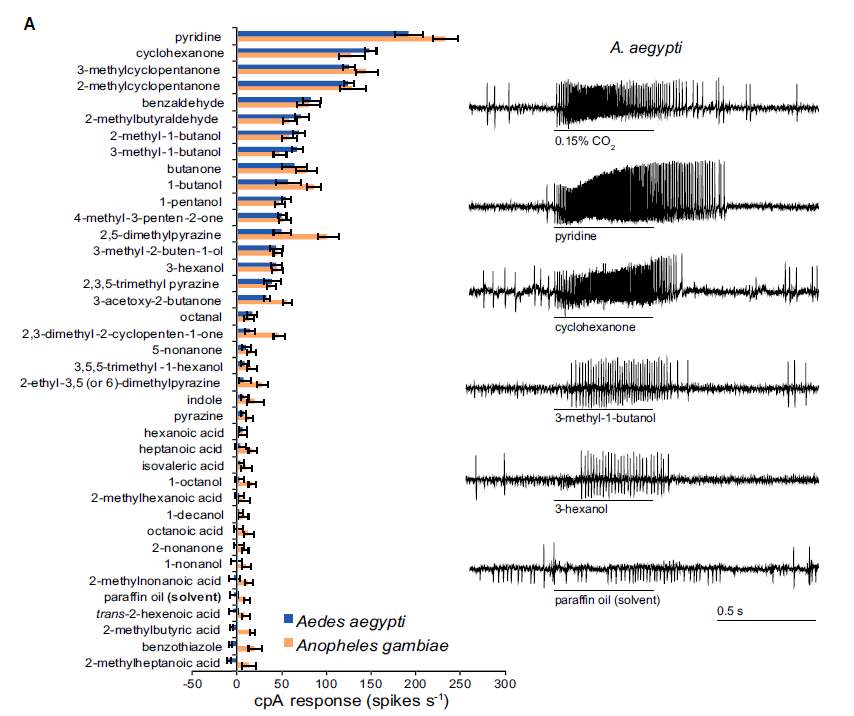Carbon Dioxide masking product against Mosquitos

Our client asked us to work on a novel Carbon Dioxide chemistry commercial product, to fight off mosquitos before they come very close to our bodies. Current products only deal with mosquitos’ repulsion close to our skin and are based on strongly emitting aromatic organics. Some of those aromatic compounds are of natural origin and some of synthetic origin. In any case, concentration limits exist that when surpassed skin irritations may appear.
Mosquitos identify their human targets by three mechanisms:
- When far, in distances up to 30 m, mosquitos use their sensitive sensors to identify gradients of Carbon Dioxide composition, caused by human exhalation. The average Carbon Dioxide composition in atmospheric air is 400 ppm whereas the average Carbon Dioxide composition in exhaled air is 4-5 %. This great difference causes clouds of gradient Carbon Dioxide concentrations around each living and breathing human. Those ‘plumes’ are detectable by mosquitos and drive them closest to us.
- When in lower distances, closer than 5m, mosquitos can also identify the compounds of our sweat as well as secondary compounds of our exhalation. Those compounds commonly include alcohols, ketones and some organic acids.
- When in close proximity, less than 1 m, mosquitos are driven by our thermal discharges, along with the previous parameters (Carbon Dioxide and organics]
It is clear that a mosquito repellant can have different ranges of application:
-A long-range effect, targeted at reducing or totally eliminating Carbon Dioxide detection capacity of mosquitos
- A mid-range effect, targeted at reducing or totally eliminating organics detection capacity of mosquitos
- A close-range effect, targeted at either eliminating the ability for thermal gradients detection OR/ AND absorb thermal discharges, and thus eliminating the temperature profile around humans
Various approaches can be employed for each of the phases; entomologists have provided deep understanding into the mosquitos’ receptors functionality. Electrophysiological studies have revealed antagonists for those receptors, that can mimic Carbon Dioxide behavior [antagonists] or partially/ totally mask Carbon Dioxide detection. Using such masking agents, we were able to produce formulations for a controlled time-release commercial product that would offer Carbon Dioxide masking, by creating negative responses in mosquitos’ receptors. This novel product deals with most of our secretions as well but not the thermal profile management. The thermal profile is usually handled with strong natural and chemical repellants, that make the negative effect on mosquitos more important than the thermal effect.
A group of four to five compounds with known olfactory inhibition effects have been used in various formulations based on property – composition simulations and thermodynamic calculations. Toxicity and irritation limits were never reached for our top formulations. A more efficient combination of the suggested product will also include the other organics’ masking agents, as known by electrophysiological studies.
